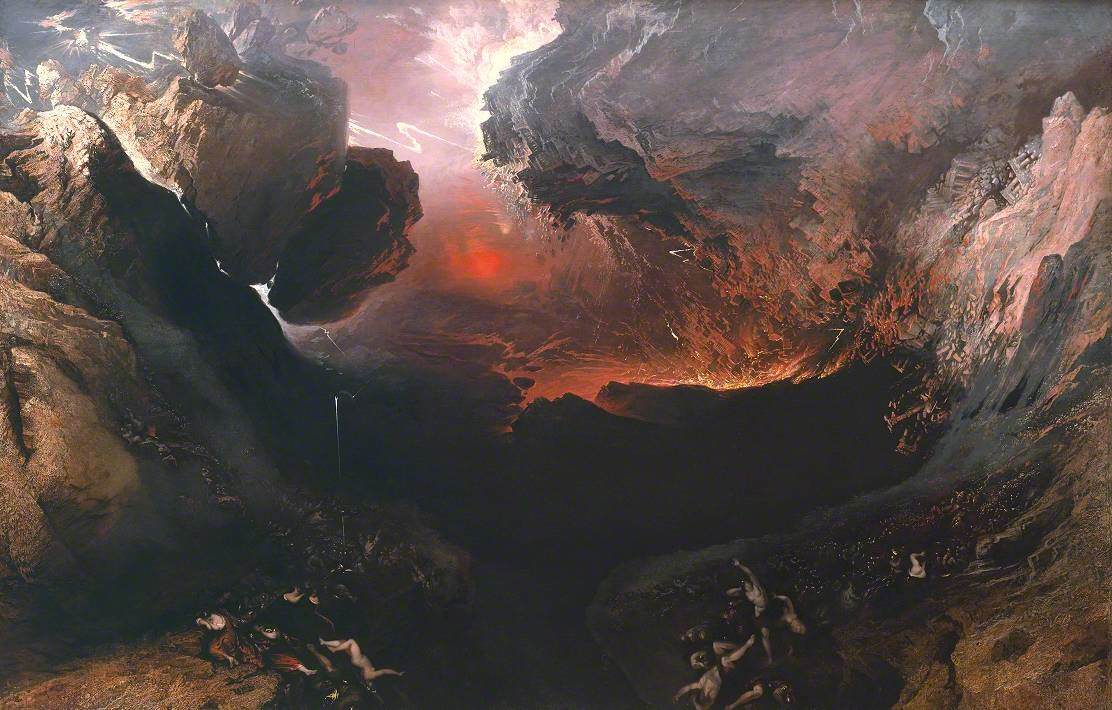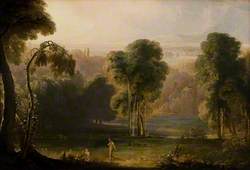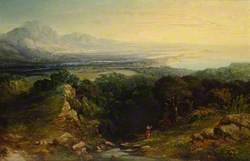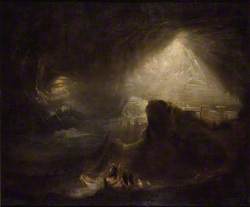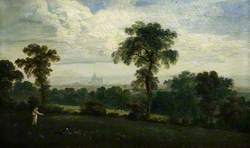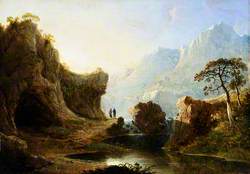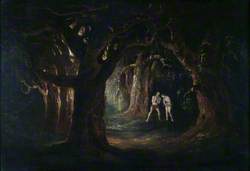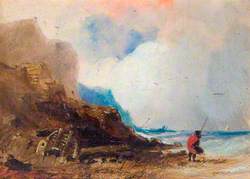How you can use this image
This image is available to be shared and re-used under the terms of the Creative Commons Attribution-NonCommercial-NoDerivatives licence (CC BY-NC-ND).
You can reproduce this image for non-commercial purposes and you are not able to change or modify it in any way.
Wherever you reproduce the image you must attribute the original creators (acknowledge the original artist(s) and the person/organisation that took the photograph of the work) and any other rights holders.
Review our guidance pages which explain how you can reuse images, how to credit an image and how to find more images in the public domain or with a Creative Commons licence available.
DownloadNotes
Add or edit a note on this artwork that only you can see. You can find notes again by going to the ‘Notes’ section of your account.
This is the third picture in Martin's great triptych, known as the 'Judgement Series'. Along with the other two vast panels, 'The Last Judgement' and 'The Plains of Heaven' (Tate T01927 and T01928), it was inspired by Saint John the Divine's fantastic account of the Last Judgement given in Revelation, the last book of the New Testament. Martin's aim in producing this series was highly Romantic: to express the sublime, apocalyptic force of nature and the helplessness of man to combat God's will. Of all Martin's biblical scenes, this presents his most cataclysmic vision of destruction, featuring an entire city being torn up and thrown into the abyss. The Book of Judgement is sealed with seven seals. As each seal is broken, mysterious and terrifying events occur, culminating in the breaking of the sixth seal: 'and, lo, there was a great earthquake and the sun became black as sackcloth of hair, and the moon became as blood; | And the stars of heaven fell unto the earth, even as a fig tree casteth her untimely figs, when she is shaken of a mighty wind.
Martin follows the biblical description closely, but adds his own sensational effects. A blood-red glow casts an eerie light over the scene. The mountains are transformed into rolling waves of solid rock, crushing any buildings that lie in their wake. Lightning splits the giant boulders which crash towards the dark abyss, and groups of helpless figures tumble inexorably towards oblivion. The three pictures in the triptych became famous in the years after Martin's death and were toured throughout England and America. They were described as 'The most sublime and extraordinary pictures in the world valued at 8,000 guineas' (quoted in Wilson, p.76). Many mezzotints of the pictures were sold, but the vastness and theatricality of Martin's visions now appeared outmoded to the mid-Victorians, and the paintings themselves failed to find a buyer. By the twentieth century, Martin's work had fallen into obscurity and he became known as 'Mad Martin'. In 1935 the triptych was sold for seven pounds and the separate panels dispersed. It was reunited by the Tate in 1974.
Further reading: Simon Wilson, 'Tate Gallery – An Illustrated Companion', London 1990, p.76. Christopher Wood, 'Victorian Painting', London 1999, pp.19–20, reproduced p.20, in colour. Frances Fowle December 2000
Title
The Great Day of His Wrath
Date
1851–3
Medium
Oil on canvas
Measurements
H 196.5 x W 303.2 cm
Accession number
N05613
Acquisition method
Purchased 1945
Work type
Painting
Inscription description
date inscribed
